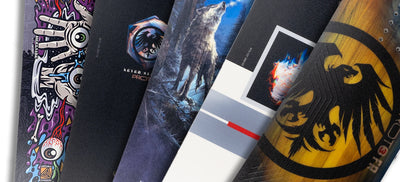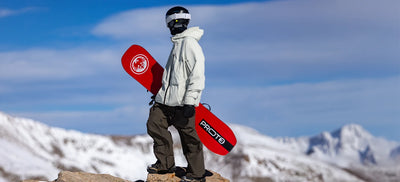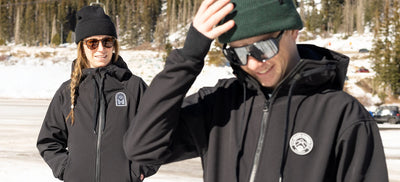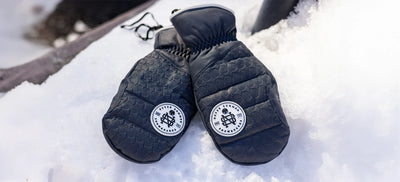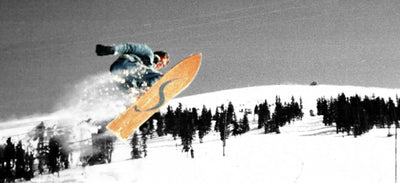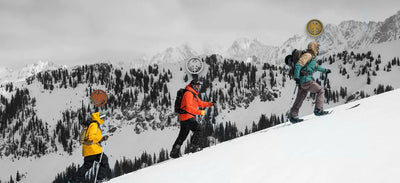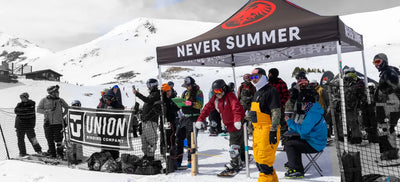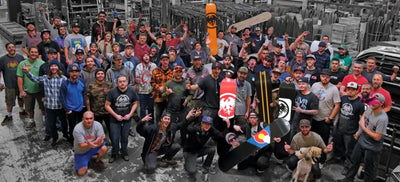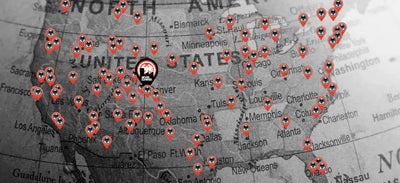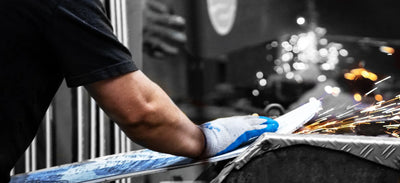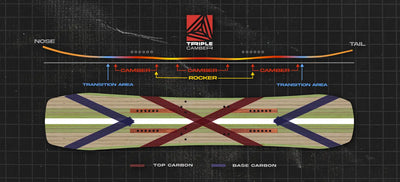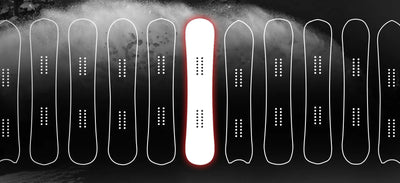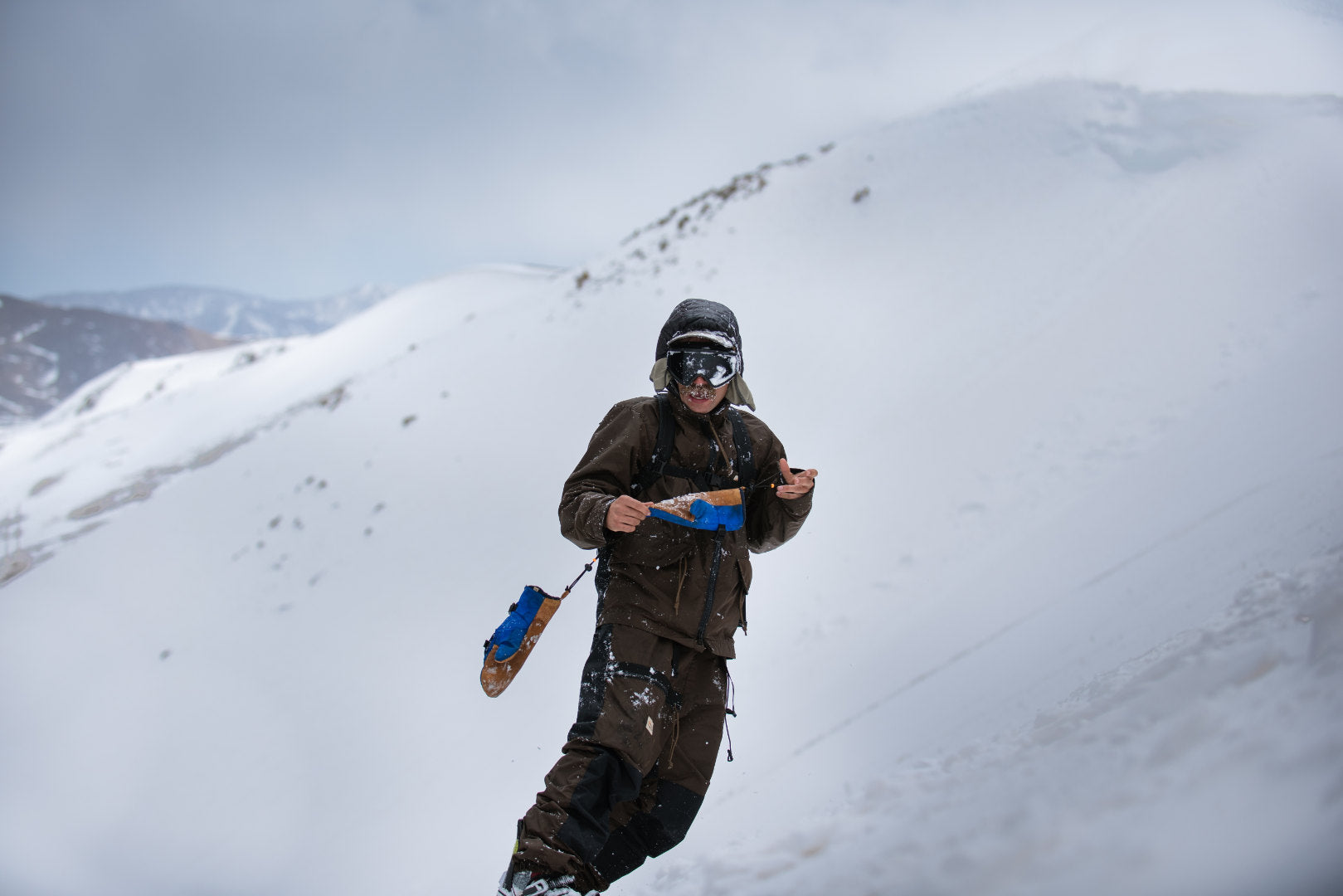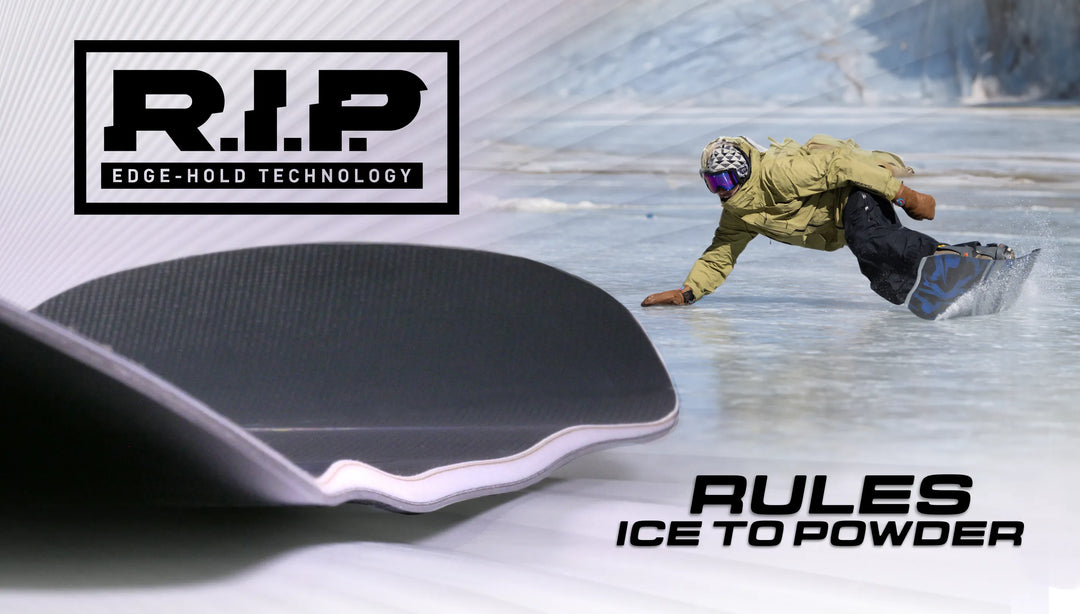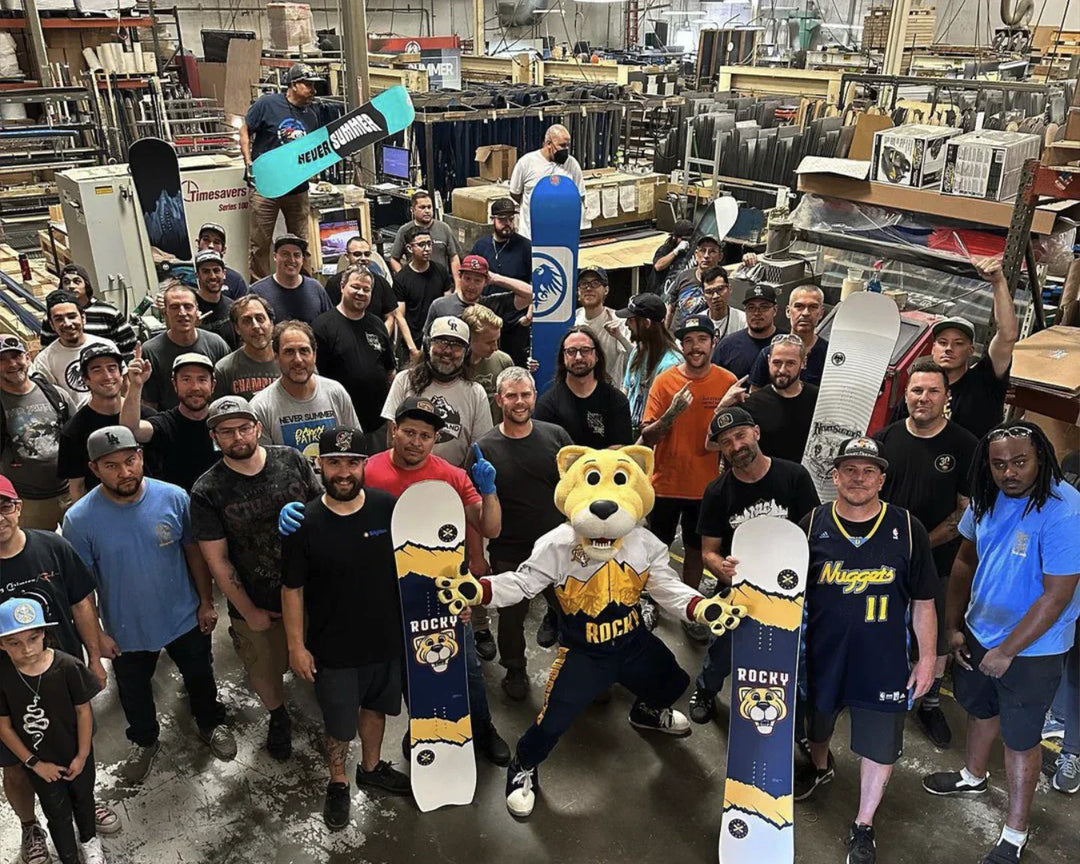Snowboarding feels overwhelming as a beginner. If you barely know how to strap yourself into your board, are you going to be able to make it down the mountain?
Just remember that everyone started as a beginner. The most famous boarders in the world all stepped up on a snowboard for the first time at one point. The only difference between them and you is just time spent practicing.
And that’s all there is to snowboarding. It’s just practice and patience that will help you feel more confident on the slopes and eventually have you feeling so good that you’re happy to fly down a black diamond—no questions asked.
Let’s go over the 10 most important snowboarding tips for beginners so when you hit the mountain, you’re already a step ahead.
#1 Make Sure You Have The Right Board
There are a lot of different types of snowboards for a reason. When you walk into a snowboard shop and wonder how there can be so many different boards, it’s because they all ride differently.
As a beginner, look for a board that has rocker camber. Rocker camber places rocker in between your feet, and camber underneath each foot. Rocker between your feet will make the board more catch free, so that you won’t catch your edges as much when you are learning to turn. Camber is to help the edge dig while initiating turns. Rocker camber in combination is great for learning to turn, because it will allow you to engage in turns easier, and make you less prone to catching your edge.
All-Mountain boards are great for beginners because you can use them on the entire mountain. Freestyle boards will be better in the parks, and freeride boards are what you’ll take to the top of the mountain. All of these board types are available in rocker camber.
If you don’t know what board is the right fit for you, here’s the ultimate guide to choosing a snowboard.
#2: Make Sure You Have Proper Gear (And It Fits Well)
Riding with the wrong gear is not worth the potential danger it could get you into. We’d rather have you spend your first winter riding the slopes every day, not in a cast, because your boots were too small and you couldn’t maneuver correctly. Having comfortable feet is the most important part to enjoying a long day in the snow.
Your boot fit is crucial for your gear. Your toes should feel the end of the boot but not be curled or pressed tightly against it. If your boot is too big, your heels will lift too much, and it’ll be hard to control your board (that’s when injuries happen). You’ll also want to make sure that your clothes are keeping you warm but not making you feel like you’re wrapped in a personal sauna. If your pants and jacket are too warm, you’ll fog up your goggles and spend the entire time wishing to be cold instead. Make sure you grab the right gloves, goggles, and beanies too!
#3: Take a Snowboarding Lesson
Lessons might not feel cool, but they’ll feel a lot cooler when you’re not the one sitting in the lodge with a broken wrist. Lessons will help you learn the foundations of boarding and give you the confidence to take that ski lift up to the top of the mountain. Instructors will help move your learning curve faster while giving you little tips that would have taken you a few runs to figure out.
Take a snowboarding lesson the first time you go to a mountain so that you can learn the basics of how to maneuver your board and what to expect on your first ride down. That lesson will help you become a better boarder faster and is always worth the investment.
#4: Always Look Forward and Watch Where You Want To Go
We’re going to help you avoid a common mistake we see a lot of newbie boarders make. When you’re riding down the mountain, your body and board will naturally follow where you’re looking. This means that if you keep looking down directly at your feet, you’re not going to go far, and you’re going to fall. Or, if you keep looking at trees nervous that you’ll run into them—you’re going to head that way. Classic object fixation.
Always look forward and keep your focus on where you want to go. This will make sure you stay on the path that you want to be on and don’t end up somewhere that you don’t. And remember…enjoy the view.
#5: Bend Your Knees
With your eyes up and looking forward, the other thing you want to remember is to bend your knees. Bent knees are going to absorb contours in the snow and help you keep control of your board. If your knees are too straight, you’re not going to be able to maneuver the way you need to.
Your knees don’t need to be at a full 90-degree angle, but keeping them slightly bent will allow you to always be ready for obstacles and quick decisions. Keep a loose bend in them and let them adjust as needed based on what you’re riding over. Your knee position will be a huge help in getting better at boarding faster, so put a lot of focus on finding the best positions for specific points of the run. Keeping your knees and body relaxed will also prevent injury if things don’t work out the way you planned. Stay relaxed and mentally sharp!
#6: Ride Across The Slope
If you’re scared that you’re going to get off the ski lift and lose control of your board as you speed down the mountain, this is going to save you. The key is to make sure that you’re not boarding directly down the mountain. Instead, you want to be riding across the slope.
This means that you’re going from the left of the ride to the right, back to the left, and back to the right. You’ve seen this movement in videos of people skiing and snowboarding before. As long as you maintain that, you’re going to keep control of your board. The larger you make your ride from one side of the slope to the other, the slower you’ll go. Make sure to always pay attention to your surroundings. When you are cutting across the slope, it’s extremely important to look up the hill and make sure no one from above is about to zoom by. This will help you avoid collisions, and unwanted confrontation with fellow skiers and boarders.
#7: Practice on the Bunny Slopes
When you first get to the mountain, we know some of you will take a look at the bunny hill and think, “Eh, I don’t need it.” Well, you definitely do. We’re not saying that you couldn’t handle going down the slopes first run (we’re also not advocating for you to do that). Going down the bunny hill gives you something the slopes can’t—more freedom to learn.
When you’re on the slopes, there are going to be a lot of people zooming by you. Since there are expert skiers and snowboarders up there, you’re going to have to pay a lot of attention to your surroundings. And, you’re going to have to try to stay upright and moving as fast as you are comfortable down the mountain. It’s better to do a few runs down the bunny slope to get an idea of what you’re doing so that once you’re on the slopes, you’re more confident in your skills.
#8: Observe All Resort Rider/Skier Safety Conduct
Again, this is why you want to start on the bunny slope. Once you’re on the mountain, you’re going to have a lot more to worry about than not falling. You’ll always need to be looking up the mountain when you cross the slope and never (ever!) stopping in blind spots.
Make sure you’re confident enough in your boarding skills to be able to take a few looks up the mountain as you’re crossing the slope and that if you’re in a blind spot, you’re comfortable to keep moving forward at whatever speed is necessary.
#9: Be Patient and Don’t Rush Yourself
It’s really tempting to jump right onto the slopes and just see what happens. Especially if you’re going with more experienced riders, you can feel pressure to stay with your group of friends and just try going down the mountain or a more experienced run than you’re ready.
Patience is going to be key in your boarding journey. You want to have a fun time, so give yourself the time to learn the foundations. Then, you can start to get into the fancier stuff (like hitting the park or those black diamonds).
#10: Have Fun!
We can’t end this article without the most important part of your snowboarding experience. Just have fun. There’s a reason Never Summer lives, breathes, and eats the snowboarding life. We love it. And so will you. Once the ski lift brings you to the top of your first mountain, and you see the panoramic views as you’re floating down the pow—you’re going to be hooked. We’re excited to bring you into the boarding family, and we’ll be looking out for you on the slopes in your Never Summer gear.
As a new rider, it’s normal to feel overwhelmed and unsure about yourself. Just remember, the only thing between where you are today and where the pros are is just how much time they’ve spent on the slopes.
Get out there and start practicing, and you’ll be running up and down the slopes in no time.


